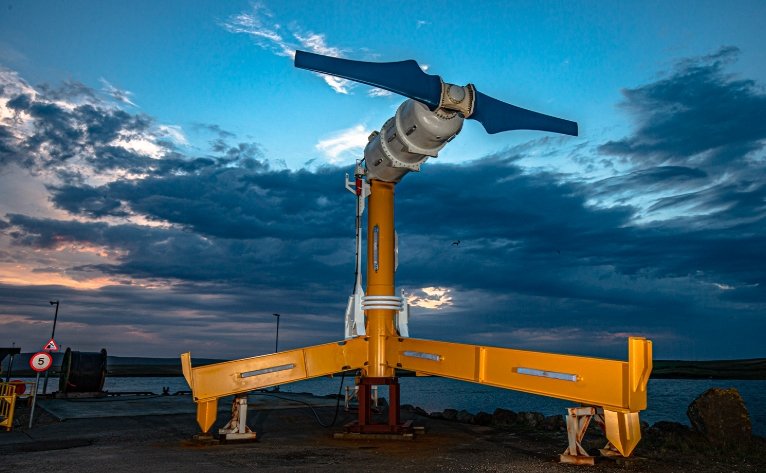Scotland’s pioneering tidal energy industry could be held back by outdated environmental regulations and a lack of scientific consensus over risks to marine life, according to a new report released Tuesday by the European Marine Energy Centre (EMEC).
The report, titled Managing the Consenting Risk of Harbour Seal Collision in the Scottish Tidal Energy Industry, calls for urgent reform of the UK’s marine consenting process. Its core message: the current system is overly cautious, evidence-light, and could slow the rollout of renewable technologies critical to Scotland’s net-zero ambitions.
Tidal Power Leaders Warn of Bottlenecks
Backed by Crown Estate Scotland and Highlands and Islands Enterprise, the report was developed under the Tidal Industry Seal Project (TISP), with input from eight consultancy and industry organisations including SAE Renewables, Nova Innovation, and Orbital Marine Power.
The concern centers on the Pentland Firth and Orkney Waters — globally recognised as hotbeds for tidal stream energy. Despite decades of monitoring, there is no verified evidence that tidal turbines harm harbour seals. Yet developers still face extended permitting delays due to collision risk fears.
“Extensive monitoring of operational tidal projects in Scotland has found no evidence of seal-turbine collisions,” said Ewan Edwards, Environmental Specialist at Xodus Group, a contributor to the report. “In fact, data suggest seals actively avoid operating turbines, especially during peak tidal flows.”

Seal Populations in Decline — But Not Due to Turbines
Harbour seal numbers around Orkney and northern Scotland have dropped sharply over the past 20 years. However, scientists attribute this primarily to natural predation, competition for food, and possible biotoxin exposure — not tidal energy infrastructure.
“This is generally attributed to factors such as competition for food with other species, predation by killer whales or grey seals, and potentially biotoxins from algal blooms,” Edwards added.
Nonetheless, the “precautionary principle” built into current regulations has led to long lead-times for developers. The industry argues that a shift toward a proportionate, evidence-based system is now urgently needed.
Report Recommends Science-Based, Regionalised Approach
The report urges UK and Scottish regulators to adopt more flexible, regional frameworks based on cumulative environmental understanding rather than project-by-project risk assessments. This would allow data to be shared across similar locations and scenarios, cutting duplication and improving ecological outcomes.
Key recommendations include:
-
Replacing hypothetical worst-case scenarios with data-informed probability models
-
Developing shared regional baselines for seal activity and population trends
-
Improving collaboration between developers, regulators, and environmental agencies
-
Investing in new monitoring technologies to reduce uncertainty around marine mammal interactions
Donald Leaver, Environment and Consents Manager at EMEC, stressed the importance of resolving these issues quickly as new buildouts accelerate.
“With various new projects in the Pentland Firth and Orkney Waters due to be built out over the coming decade, it is vital this consenting uncertainty is resolved in a collaborative, science-led manner,” he said.
Industry Readies for Expansion, but Needs Policy Support
Scotland currently hosts more operational tidal energy capacity than anywhere else in the world. Projects like MeyGen have already demonstrated the sector’s ability to generate reliable power while supporting domestic energy security.
But Fraser Johnson, O&M Manager at MeyGen, warned that growth depends on investor confidence — something he says is undermined by regulatory inertia.
“We must ensure we put in place a framework that enables responsible growth, builds trust, and delivers long-term value across communities, the environment, and those investing in a more resilient energy future,” Johnson said.
The industry has momentum. According to Scottish Renewables, nearly two-thirds of companies in the clean energy supply chain are investing in upskilling, infrastructure, and R&D to prepare for growth over the next three to five years.
But with global demand for renewables rising and competition heating up, experts say Scotland can’t afford to drag its feet. Tidal power, once a fringe technology, is now a pillar of future climate and energy strategy.
And as the EMEC report makes clear — the science is no longer the barrier. The system is.


















